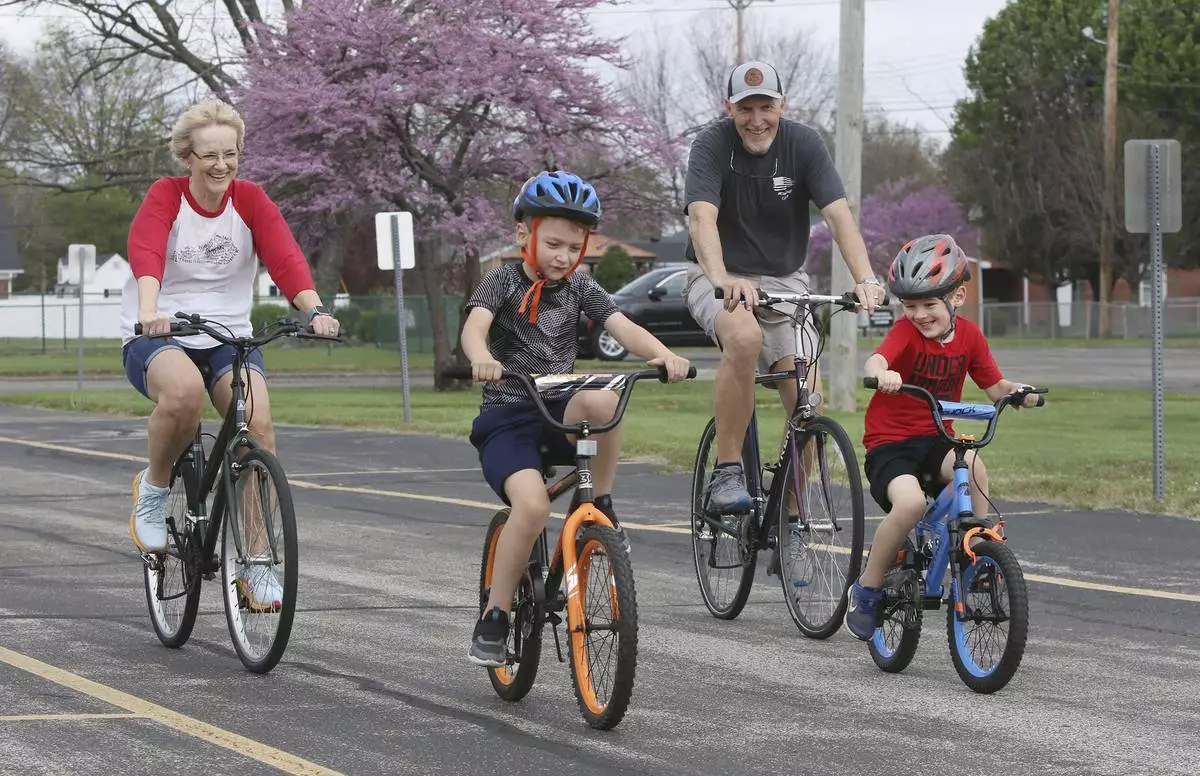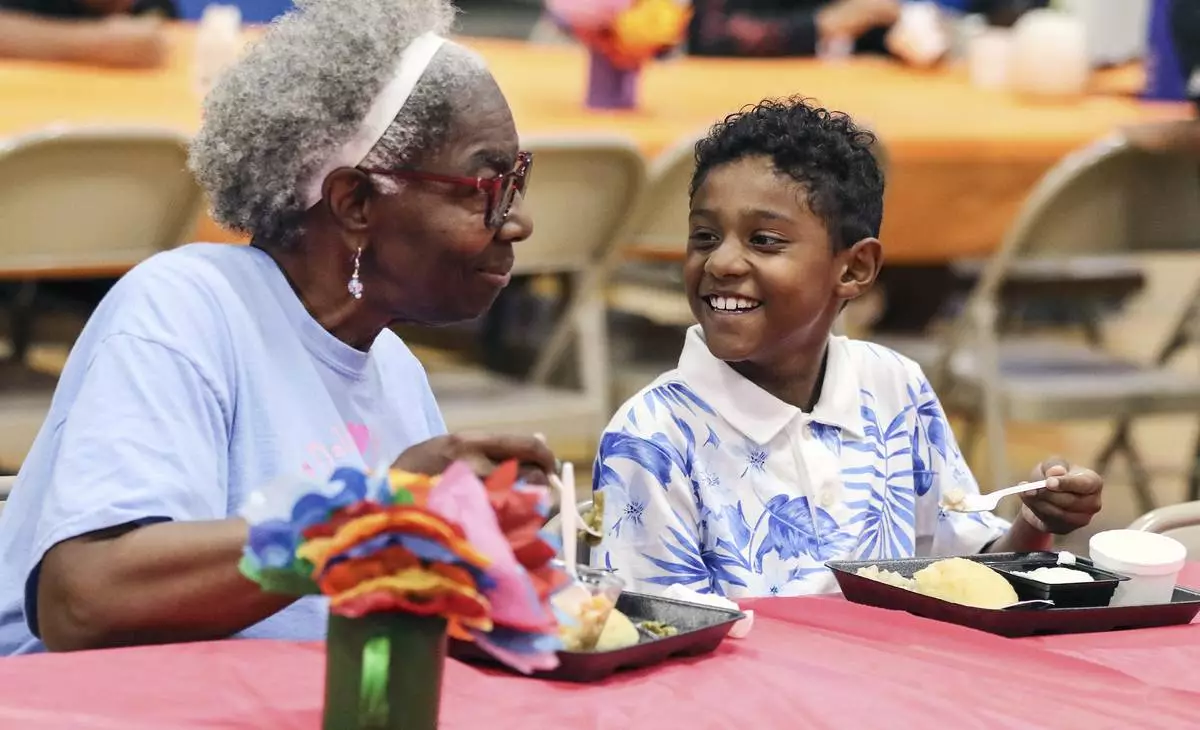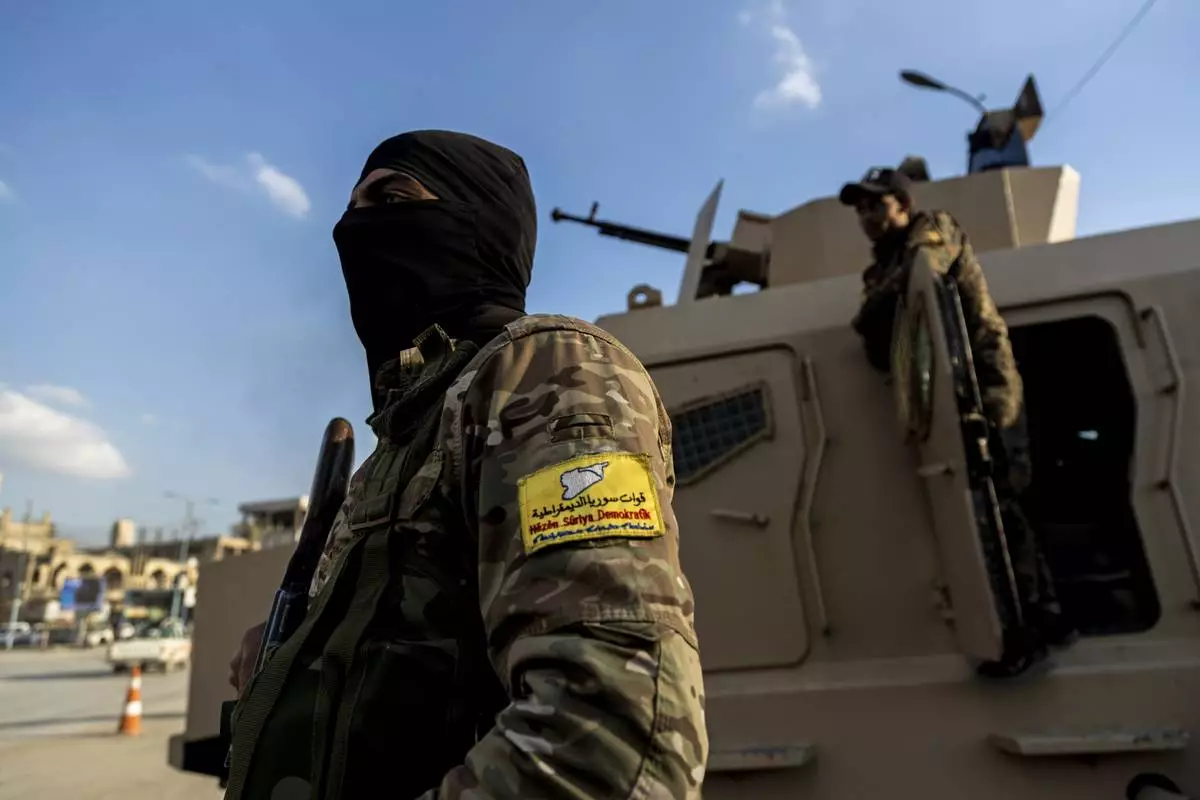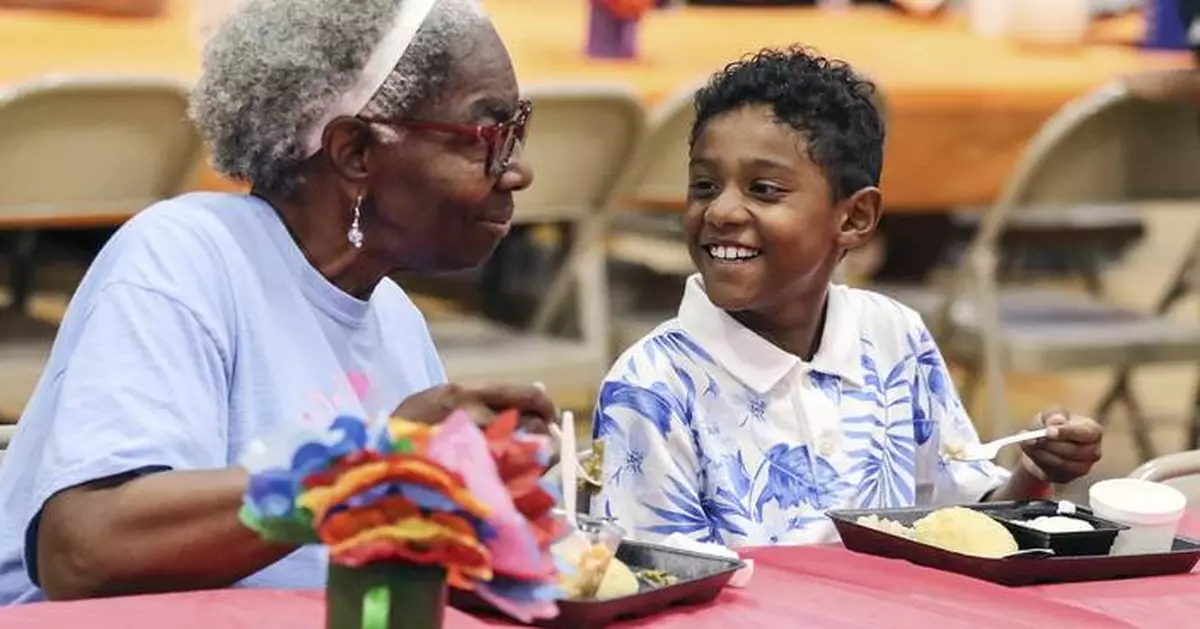Fewer grandparents were living with and taking care of grandchildren, there was a decline in young children going to preschool and more people stayed put in their homes in the first part of the 2020s compared to the last part of the 2010s, according to U.S. Census Bureau data released Thursday, reflecting some of the effects of the COVID-19 pandemic.
The latest figures from the most comprehensive survey of American life compares the years of 2014-2018 and 2019-2023, timeframes before the COVID-19 pandemic and during the virus' spread. The American Community Survey data show how lives were changed and family relationships altered by the pandemic and other occurrences like the opioid crisis.
The survey of 3.5 million households covers more than 40 topics, including ancestry, fertility, marital status, commutes, veterans status, disability and housing.
The decrease in grandparents' taking care of their grandchildren is most likely the result of a decline in opioid-related deaths during the more recent timeframe since substance abuse is a leading reason that grandparents find themselves raising grandchildren. A reduction in the number of incarcerated women also likely played a role, said Susan Kelley, a professor emerita of nursing at Georgia State University.
“It's very rarely for positive reasons that grandparents find themselves in this situation. Usually, it's a tragic situation in an adult child's life, either a death, incarceration or mental health issues which correlate with substance abuse," Kelly said. "Many grandparents thrive in that role, but there are still socioeconomic and emotional burdens on the grandparents."
A stronger economy in the most recent period also may be a reason that the number of grandparents living with their grandchildren declined from 7.2 million to 6.8 million by making it less likely that adult children with their own children were seeking housing help from their parents, she said.
The decline in the number of young children enrolled in preschool stemmed from an unwillingness to send young children to school and the closure of many schools at the height of the pandemic, according to the Census Bureau.
“These data show how the COVID-19 pandemic had a significant impact on patterns of early childhood education,” the bureau said in a separate report. "Future research will show if this was the start of a long-term trend or if enrollment will bounce back to prior levels."
Americans continued to get older, with the median age rising to 38.7 from 37.9 and the nation's share of senior citizens up from 16.8% from 15.2%. The share of households with a computer jumped to almost 95% from almost 89%, as did the share of households with a broadband connection to almost 90% from 80%.
Additionally, fewer people moved and more people stayed put in the most recent time period compared to the earlier one, in many cases because of rising home values and the limited availability of homes to buy.
Home values increased by 21.7% and the percentage of vacant homes dropped from 12.2% to 10.4%. The median home value jumped from $249,400 to $303,400 nationwide.
In some vacation communities popular with the wealthy, the bump was even more dramatic, such as in the county that is home to Aspen, Colorado, where it went from $758,800 to $1.1 million, and in the county which is home to Martha's Vineyard in Massachusetts, where it jumped from $812,400 to $1.1 million.
Follow Mike Schneider on the social platform X: @MikeSchneiderAP.

FILE - Gabriel Swift, 7, second left, wins a bike race against his brother, Isaiah Swift, 5, and his grandparents, Kim and Steve Swift, as they ride their bikes around the loop in the empty parking lot on Monday at One Faith Fellowship in the 1300 block of Tamarack in Owensboro, Ky., on April 1, 2024. (Alan Warren/The Messenger-Inquirer via AP)/The Messenger-Inquirer via AP, File)

FILE - Aaliyah Floyd, 10, right, selects school supplies with volunteer Cindy Blomquist, left, at the annual Back to School Distribution Day at The Pantry, Friday, July 29, 2022, in Fort Lauderdale, Fla. The Pantry works with grandparents who are the primary caregivers for their grandchildren, offering free backpacks, lunch boxes, school supplies and sneakers. (AP Photo/Lynne Sladky, File)

FILE - Third-grader Dallin Curry, 8, smiles as he talks with his grandmother, Mary Durr, Sept. 6, 2024, during a Grandparents Day celebration in the lunchroom at Burns Elementary School in Owensboro, Ky. (Alan Warren/The Messenger-Inquirer via AP, File)
The jihadi rebels who toppled Syrian President Bashar Assad say they want to build a unified, inclusive country. But after nearly 14 years of civil war, putting that ideal into practice will not be easy.
For Syria’s Kurdish minority, America’s closest ally in the country, the struggle for a new order is entering a potentially even more challenging phase.
Over the course of Syria’s civil war, Kurdish fighters have fended off an array of armed factions, partnered with the U.S. to rout the Islamic State group and carved out a largely autonomous region in the country’s oil-rich east.
But the gains of the non-Arab Kurds are now at risk. The ascendance of the Sunni Arab rebels who overthrew Assad — with vital help from Turkey, a longtime foe of the Kurds — will make it hard for the Kurds to find a place in the new Syria and could prolong the conflict.
The jihadi rebels who rode into Damascus over the weekend have made peaceful overtures to the Kurds. But the rebels violently drove Kurdish fighters out of the eastern city of Deir al-Zour days after government forces abandoned it.
To the north, a separate opposition faction backed by Turkey that has been battling the Kurds for years seized the town of Manbij. And Turkey carried out airstrikes on a Kurdish convoy it said was carrying heavy weapons looted from government arsenals.
The Kurds have long counted on U.S. aid in the face of such challenges. Around 900 American troops are in eastern Syria, where they partner with Kurdish forces to prevent an Islamic State resurgence. But the future of that mission will be thrown into doubt under president-elect Donald Trump, who has long been skeptical about U.S. involvement in Syria.
Here's a closer look at the predicament the Kurds find themselves in.
The Kurds are among the largest stateless ethnic groups in the world, with some 30 million concentrated in a territory straddling Turkey, Iran, Iraq and Syria. They are a minority in each country and have often suffered persecution, which has fueled armed Kurdish uprisings.
In Syria, they carved out an autonomous enclave early in the civil war, never fully siding with the Assad government or the rebels seeking to topple him.
When the Islamic State group seized a third of the country in 2014, Kurdish fighters — who are secular and include women in their ranks — proved their mettle in early battles against the extremists, earning support from the U.S.-led coalition.
They formed a group known as the Syrian Democratic Forces, which also includes Arab fighters, and drove the Islamic State group out of large areas of Syria with help from U.S.-led airstrikes and American special forces. In 2017, these Kurdish-led forces captured Raqqa, the capital of the extremists' self-styled caliphate.
Turkey has long viewed the SDF as an extension of the decades-old Kurdish insurgency within its own borders. It considers the main Kurdish faction a terrorist group on par with the Islamic State and has said it should have no presence in the new Syria.
In recent years, Turkey has trained and funded fighters known as the Syrian National Army, helping them wrest control of territory from the Kurds in northern Syria along the border with Turkey. These Turkish-backed fighters have portrayed themselves as part of the opposition against Assad, but analysts say they are largely driven by opportunism and hatred of the Kurds.
The Kurds have focused on battling the SNA in recent years. But the new leadership in Damascus, which also has longstanding ties to Turkey, could open another, much longer front.
The main rebel faction is led by Ahmad al-Sharaa, formerly known as Abu Mohammed al-Golani, a former al-Qaida militant who cut ties with the group eight years ago and says he wants to build a new Syria free of dictatorship that will serve all its religious and ethnic communities.
Nawaf Khalil, head of the Germany-based Center for Kurdish Studies, said the early signs were positive. He said the rebels steered clear of two SDF-controlled enclaves of Aleppo when they stormed the city two weeks ago at the start of their rapid advance across the country.
“It is also positive that they did not speak negatively about the Syrian Democratic Forces," he said.
It remains to be seen if those sentiments will endure. After sweeping into Deir al-Zour this week, a fighter from al-Sharaa's group posted a video saying they would soon advance toward Raqqa and other areas of eastern Syria, raising the possibility of further clashes with the Kurds.
The rebels could still seek some kind of agreement with the Kurds to incorporate them into the post-Assad political order, but that would likely require accepting a degree of Kurdish autonomy in the east. It would also risk angering Turkey, which now appears to be the chief power broker in Syria.
The top U.S. military commander for the Middle East, Army Gen. Erik Kurilla, met with SDF forces in Syria on Tuesday, in a sign of the Biden administration's commitment to the alliance post-Assad.
But things could change on Jan. 20.
Trump has provided few details about his Middle East policy, aside from saying he wants to end the region's wars and keep the United States out of them.
In a social media post shortly before Assad was overthrown, Trump wrote that “Syria is a mess, but is not our friend, & THE UNITED STATES SHOULD HAVE NOTHING TO DO WITH IT. THIS IS NOT OUR FIGHT.”
During his previous term, in 2019, Trump abandoned the Kurds ahead of a Turkish incursion, casting it as the fulfillment of a campaign promise to end U.S. involvement in the region's “endless wars.”
The move prompted heavy criticism, including from prominent Republicans who accused him of betraying an ally. Trump backtracked weeks later, approving a wider mission to secure oil fields in the east. The troops remained where they were and the alliance endured.
Associated Press writer Bassem Mroue in Beirut contributed to this report.
Follow the AP's Syria coverage at https://apnews.com/hub/syria

FILE - Turkish-backed Syrian forces stand in formation near the town of Azaz, Syria, on Oct. 7, 2019. (AP Photo, File)

FILE - Kurdish-led fighters backed by the U.S. stand guard in Raqqa, Syria, on Feb. 7, 2022. (AP Photo/Baderkhan Ahmad, File)

FILE - Kurdish-led fighters backed by the U.S. man a checkpoint in Hassakeh, Syria, on Jan. 24, 2022. (AP Photo/Baderkhan Ahmad, File)

FILE - American attack helicopter flies over Hassakeh, Syria, on Jan. 24, 2022. (AP Photo/Baderkhan Ahmad, File)

FILE - Kurdish-led fighters backed by the U.S. escort suspected Islamic State militants in Hassakeh, Syria, on Jan. 26, 2022. (AP Photo/Baderkhan Ahmad, File)

FILE - Kurdish-led fighters backed by the U.S. prepare for battle against Islamic state group militants, in Raqqa, on June 22, 2017. (AP Photo/Hussein Malla, File)


















